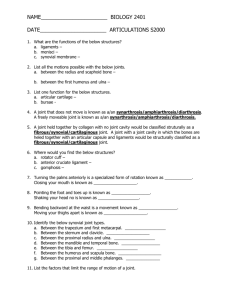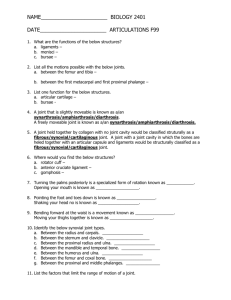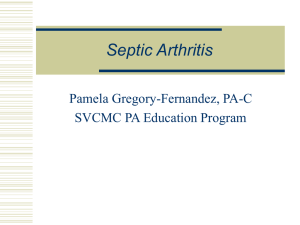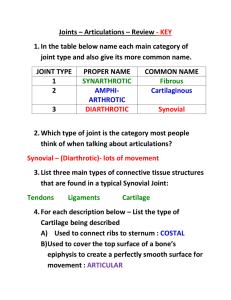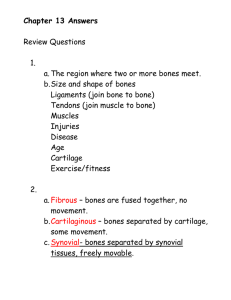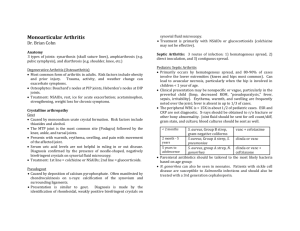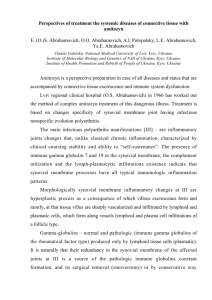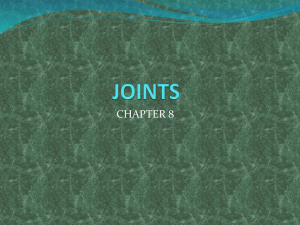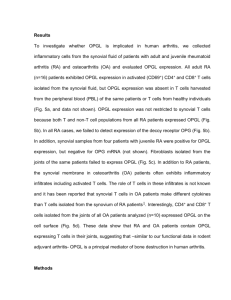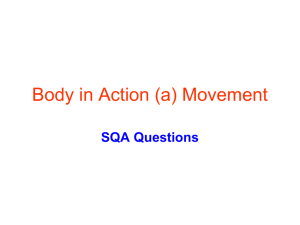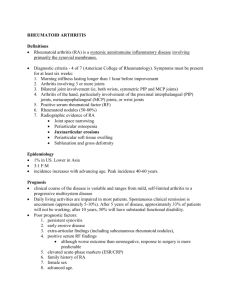Models of human synovial cells
advertisement
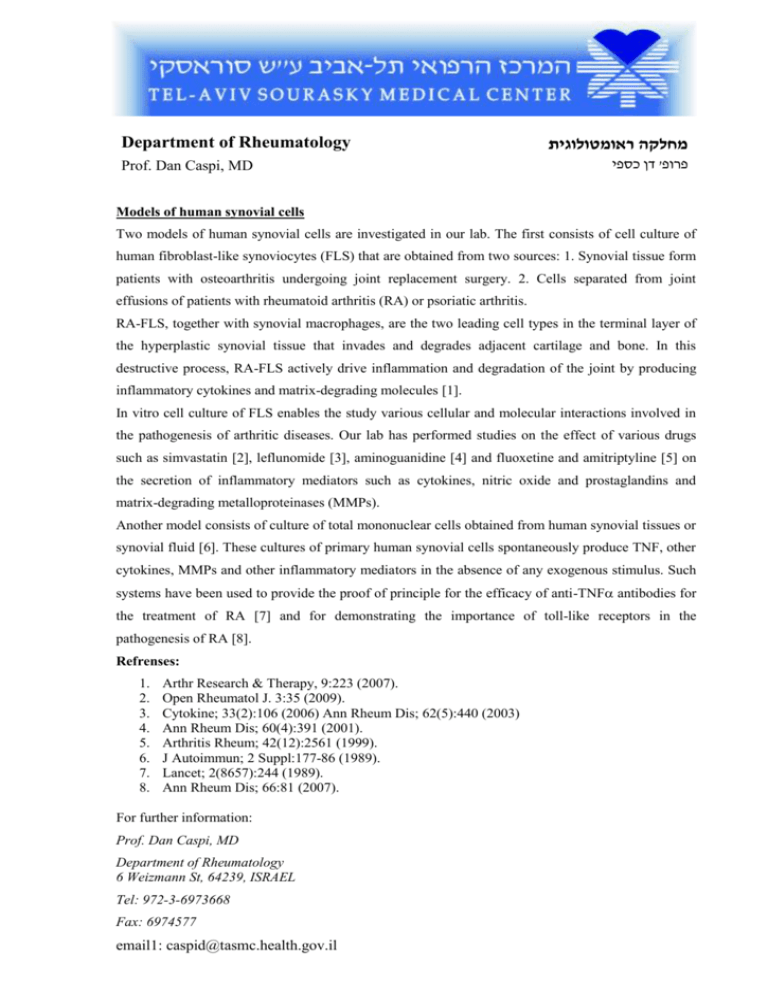
Department of Rheumatology Prof. Dan Caspi, MD מחלקה ראומטולוגית פרופ' דן כספי Models of human synovial cells Two models of human synovial cells are investigated in our lab. The first consists of cell culture of human fibroblast-like synoviocytes (FLS) that are obtained from two sources: 1. Synovial tissue form patients with osteoarthritis undergoing joint replacement surgery. 2. Cells separated from joint effusions of patients with rheumatoid arthritis (RA) or psoriatic arthritis. RA-FLS, together with synovial macrophages, are the two leading cell types in the terminal layer of the hyperplastic synovial tissue that invades and degrades adjacent cartilage and bone. In this destructive process, RA-FLS actively drive inflammation and degradation of the joint by producing inflammatory cytokines and matrix-degrading molecules [1]. In vitro cell culture of FLS enables the study various cellular and molecular interactions involved in the pathogenesis of arthritic diseases. Our lab has performed studies on the effect of various drugs such as simvastatin [2], leflunomide [3], aminoguanidine [4] and fluoxetine and amitriptyline [5] on the secretion of inflammatory mediators such as cytokines, nitric oxide and prostaglandins and matrix-degrading metalloproteinases (MMPs). Another model consists of culture of total mononuclear cells obtained from human synovial tissues or synovial fluid [6]. These cultures of primary human synovial cells spontaneously produce TNF, other cytokines, MMPs and other inflammatory mediators in the absence of any exogenous stimulus. Such systems have been used to provide the proof of principle for the efficacy of anti-TNF antibodies for the treatment of RA [7] and for demonstrating the importance of toll-like receptors in the pathogenesis of RA [8]. Refrenses: 1. 2. 3. 4. 5. 6. 7. 8. Arthr Research & Therapy, 9:223 (2007). Open Rheumatol J. 3:35 (2009). Cytokine; 33(2):106 (2006) Ann Rheum Dis; 62(5):440 (2003) Ann Rheum Dis; 60(4):391 (2001). Arthritis Rheum; 42(12):2561 (1999). J Autoimmun; 2 Suppl:177-86 (1989). Lancet; 2(8657):244 (1989). Ann Rheum Dis; 66:81 (2007). For further information: Prof. Dan Caspi, MD Department of Rheumatology 6 Weizmann St, 64239, ISRAEL Tel: 972-3-6973668 Fax: 6974577 email1: caspid@tasmc.health.gov.il
